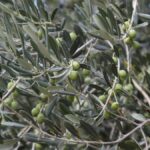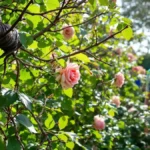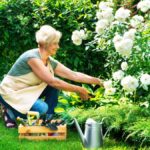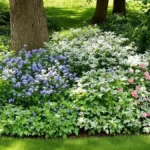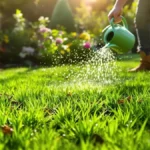Rhubarb, with its sour and creamyflavor, is a must for pies and compotes. Traditionally, it is harvested in April or May, but the forcing method allows you to harvest it from February. This technique requires a mature plant of 2-3 years, shrouded in darkness to stimulate its growth. However, it is essential to pay attention to the health of the plants and manage the nutritional intake after each harvest.
Essential to know
- Speed up the harvest of rhubarb with the traditional method of forcing.
- Harvest from February by creating darkness with an opaque pot.
- Make sure the plant is at least 2-3 years old and reaches 30 cm for harvesting.
- Warning: the leaves are toxic and must be removed.
Accelerating the harvest
Harvesting rhubarb is often synonymous with patience, as it usually takes place in April or May. However, a traditional technique, called the forcing method, allows you to harvest this delicious vegetable much earlier, as early as February. This ancient technique is a real boon for those who want to enjoy this tart and creamy vegetable in advance, often coveted for its irresistible pies and compotes.
Conditions needed to apply the method
To apply this technique, it is essential to have a mature rootstock, ideally 2-3 years old. The maturity of the plant allows for optimal harvesting, maximizing the flavor and quality of the rhubarb stalks. Darkness is a key factor in this process: it is advisable to cover the rhubarb roots with an opaque pot or a cloche to create conditions favorable to growth without light. This lack of light stimulates the production of more tender and flavorful stems.
Growth stimulation
To further promote growth, it is advisable to use straw or manure around the plant, which provides warm support to the soil. This heating is crucial to encourage the development of the stems, allowing them to be harvested when they reach a size of about 30 cm. This forcing technique, although little known, reveals surprising results for rhubarb lovers.
Precautions to take
It is important to remember that forcing the same foot every year can damage its health. To preserve the vitality of the plant, it is recommended to let the foot rest after each harvest. This rest period is necessary for the restoration of nutrients, ensuring that the plant is healthy for future seasons. Adherence to these precautions ensures a prosperous and sustainable rhubarb crop.Beware of toxic leaves
Finally, it should not be forgotten that
rhubarb leaves are toxic and must be carefully removed before consumption. The stems, on the other hand, are completely edible and delicious, offering a range of flavors that enrich many dishes. By mastering this forcing technique, you can not only anticipate the harvest of this coveted plant but also improve the quality of your rhubarb, taking care of the health of your plants.




